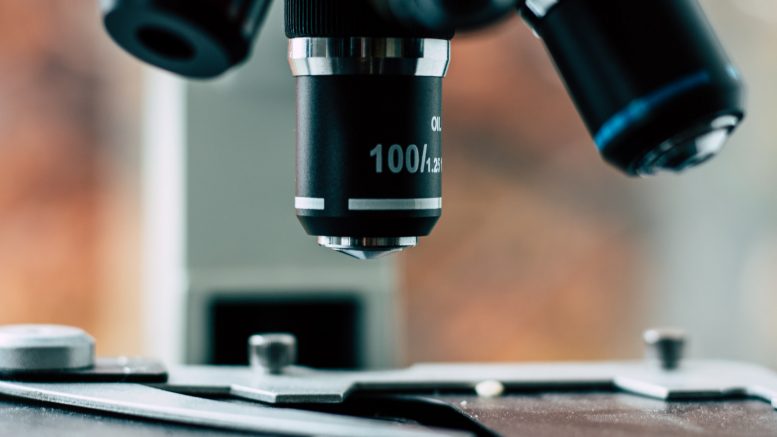Due to the Covid pandemic, laboratories and their suppliers are in greater demand for materials than ever before. Efficient ways of working have gained in importance at a headlong pace due to the pressure on all actors involved. Digitization and sustainability, the two key themes of the relevant sectors, have become even more prominent. Leaving the pandemic aside, however, good supply chain management and agility are central to the future trends of laboratories.
Hamburg-based life science company Starlab International has compiled the five most important future trends that will shape laboratories in the future:
1. Sustainability in the laboratory
A total of 181 million hits on Google speak for themselves: Sustainability has long been more than just a trend. Sustainable management, the responsible use of finite resources, is already an established economic factor. And this doesn’t stop at laboratories, either. Many companies in the relevant sectors are therefore making efforts to curb their ecological footprint. And this is relatively large, because in laboratories many articles can only be used once. And since plastics cannot be avoided in laboratory work due to legal requirements, the most sustainable solution at present lies in their manufacture and in the three “R’s”, Reduce, Reuse and Recycle.
At present, bioplastics made from corn and the production and use of recyclable plastics feature as the most promising solutions. This starts with product design and ends with recycling. Take, for example, the new generation of “TipOne” pipette tips that Starlab manufactures with up to 40 percent less plastic compared to their older tips. The associated tip racks can be autoclaved several times with no negative impact on stability, form or function, and can be reloaded with the patented TipOne refill systems. If racks have to be disposed after multiple use, they are simply recycled. They then find a second useful life in products such as garden furniture, roll containers or car batteries.
“Our customers are increasingly demanding greener solutions for disposable plastics for which there is no alternative in view of legal regulations. They are keen to reduce their consumption of resources and the amount of waste they produce. That is why we offer products that help to satisfy these needs in a sustainable cycle from production through to recycling,” as Klaus Ambos, Managing Director of Starlab International GmbH, outlined.
2. Lab 4.0 – Key issue in the laboratory environment at least until 2022
Sustainability and digitization are the key trends for the future for laboratories. Things will really heat up when “Laboratory 4.0” in the form of a digitized and intelligently networked laboratory results in greater sustainability. How will this work? With the help of advanced, cutting-edge information and communication technology, processes that link people, devices, systems, sensors and products are networked in such a way that they are largely self-organized. This innovative approach makes it possible to master the complexity of laboratory processes, optimize workflows and work efficiently – which also means sustainably and at less cost in resources, from which the industry can only profit.
3: LIMS (Laboratory Information and Management Systems) the digital component
As digitization progresses, data volumes are on the rise and with them the need for powerful software that enables laboratory technicians to keep an overview and evaluate processes. Laboratory Information and Management Systems (LIMS) are currently the solution to data management in modern laboratories, because they support work processes and data tracking, while interfaces enable data to be exchanged with other systems. Each LIMS is as individual as its laboratory and the field in which it operates. The range of functions, however, typically includes tasks such as order logging and sample registration, specifying the scope of investigation, supporting the distribution and processing of samples, results data acquisition (manual or online), releasing investigation results and generating and evaluating reports.
4. Supply chain – Optimizing inventories for increased competitiveness
Coronavirus, international trade conflicts, structural change: These and many other factors impact on the competitiveness and efficiency of laboratories. Good inventory management is not only a central factor for business success, but also a bare necessity in times of supply bottlenecks due to COVID19. “Good supply chain management is also a central aspect of sustainability in laboratory management. Buying in bulk makes handling more efficient, because less packaging material is required, while transport emissions are reduced,” adds Klaus Ambos of Starlab.
5: Agility – Creating scope for efficiency and successful development
What enables innovation? How can workspaces become more efficient? These questions, too, will define the laboratories of the future. After all, new ways of working will not only include aspects of digitization and networked communication, but also a new approach to the way our daily work is structured. Ground-breaking inventions, such as the discovery of penicillin, for example, came about not only through experimentation, through creating new compounds, but also through lucky coincidences – what we call serendipity.
“For this to happen, not only research institutions but also companies must be viewed as open to opportunity,” says Klaus Ambos. “We need a paradigm shift away from the shackles of necessity. This is also a management task. Especially when times are as challenging as they are now, the life science industry must create space for its employees to unleash their empathy, creativity and inventiveness,” explains Ambos. An agile concept offers greater scope for communication. Intensifying the exchange of ideas in turn drives creativity, employees learn more by learning together, they share their experiences and, very importantly, exchange ideas: The flow of information is enhanced, which can result in greater efficiency and development success.





